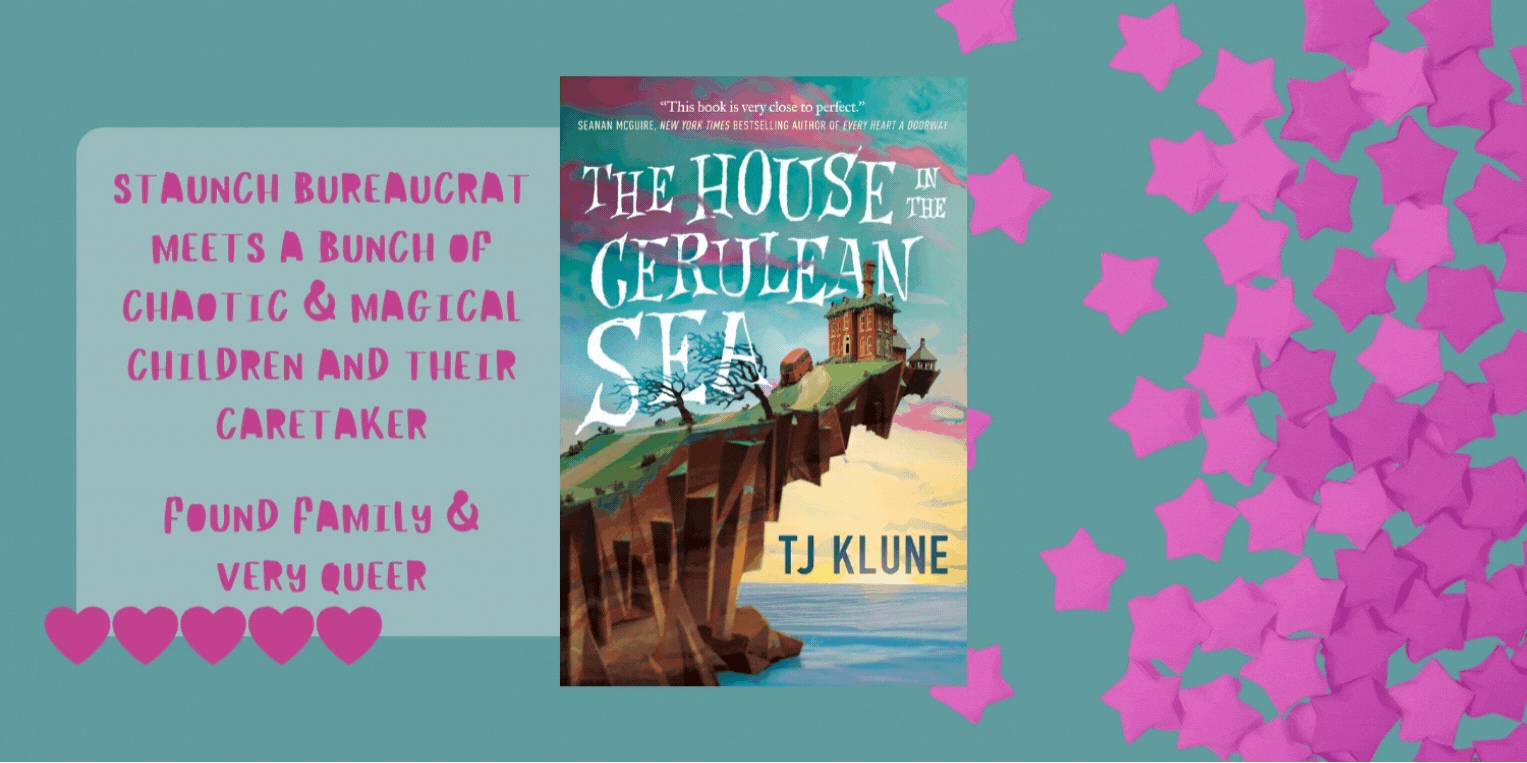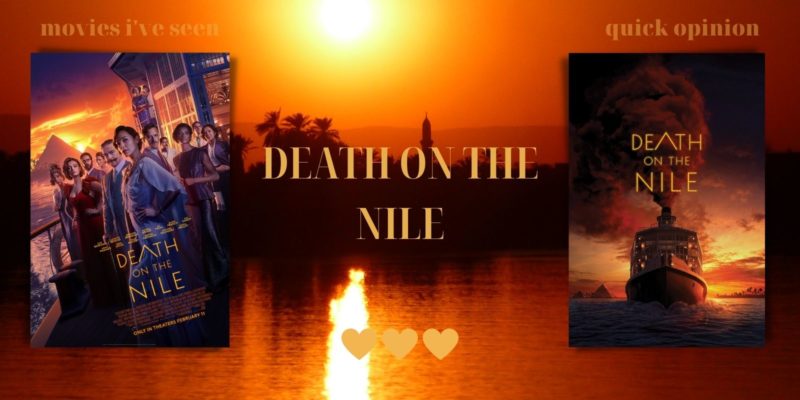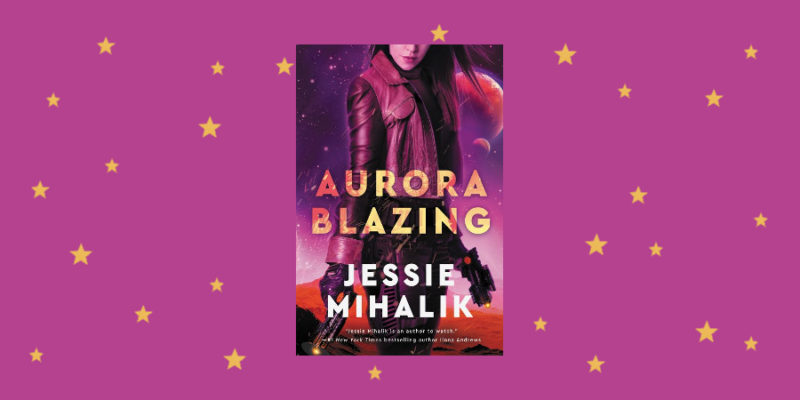Content notes for T.J. Klune’s The House in the Cerulean Sea: Trauma, bigotry, child abuse, fatphobia
- The main topic of the book is the mostly abhorrent treatment of magical children, child abuse is mentioned throughout the book and the children are more or less traumatized by their experiences
- There’s also a lot of fatmisia and talk about dieting, some of which is challenged
Representation in The House in the Cerulean Sea: m/m relationship
Content notes for T.J. Klune’s Under the Whispering Door: Death, depression, anxiety & panic attacks
- As death is the main topic of the book, it appears in many different ways throughout the story, including but not limited to the death of a child, death by cancer, murder and suicide
- There are several characters that suffer from panic attacks and there are descriptions of what triggers them and how they feel, as well as discussions about one character’s depression and anxiety
Representation in Under the Whispering Door: bi/pan main character, gay side character, m/m relationship, Black and Chinese-American side characters
Edit August 22 2021: The following review portraits my original opinion on The House in the Cerulean Sea. However, I have since learned that the novel is „inspired“ by Canadian residential schools and that is extremely problematic. While I don’t have a problem with fantastical approaches to real world issues, writing a happy-go-lucky feel-good fantasy novel about something that lead to the deaths of thousands of children and traumatized even more and saying that it didn’t feel right for a cis white male to co-opt a minority’s history of tragedy so you made it fantasy … yeah, not okay.
For more information, including quotes and sources, see this review on Goodreads.
I am pretty sure that I have read at least a handful of T.J. Klune’s earlier works. Not because I remember anything about them but because when I looked up his bibliography after reading The House in the Cerulean Sea last year, half the covers and summaries seemed eerily familiar. But, as I said, I didn’t really remember any of them. The same does not go for his two newest novels however: Even though more than a year has passed since I read The House in the Cerulean Sea, I still remember exactly what reading this book felt like. And although I have only just read Under the Whispering Door, I have a feeling that this novel will stay with me for quite a while as well.
“Hate is loud, but I think you’ll learn it’s because it’s only a few people shouting, desperate to be heard. You might not ever be able to change their minds, but so long as your remember you’re not alone, you will overcome.”
The House in the Cerulean Sea by T.J. Klune
The two novels have a few things in common: For one, they both feature a middle aged protagonist who could be described as rather boring, stiff and not exactly empathetic. Linus Baker from The House in the Cerulean Sea is a case worker for the Department in Charge of Magical Youths and every inch the boring bureaucrat. And Wallace Price from Under the Whispering Door is one of the founding partners of a successful law firm and pretty much an asshole. Both of them are stuck in mind-numbing routines with little in their lives beyond their jobs. However, both of their lives are soon turned upside down and they have to re-evaluate their priorities.
In The House in the Cerulean Sea Linus is assigned a new case that requires him to check in on an island orphanage for especially dangerous magical youths and their care-taker Arthur. However, Arthur and his charges aren’t exactly what he expected, nor do they fit his prim and proper by the book approach to life. They are essentially the anti-thesis to Linus, chaotic, warm and, despite all the tragedy that has shaped their lives, happy with their little found family. And Linus comes to realize that there might be more to life and living than just work.
Similarily, Wallace in Under the Whispering Door also has to face the fact that maybe work and success are not the key to happiness. His turning point is a little more drastic than Linus‘ though: He dies. Of a heartattack, while working on a Sunday. And he is not happy about that, after all there was so much left to do! But when a snarky reaper brings him to a tea shop in the middle of nowhere, where he meets Hugo, the kind ferryman supposed to help him cross into whatever comes next, he slowly realizes that he might not have lived his life very well.
So, not only do these novels start out with similar protagonists, they also juxtapose them with similar love interests that help them on their journey. Both Arthur and Hugo are warm and open and loving and both lead rather magical lives that differ greatly from those of the protagonists – even though, as caretaker and ferryman, they are also defined by their jobs. Interacting with them and their families and seeing how they live their lives, helps the protagonists come to some important realizations about their own lives.
And I think that’s where the novels differ the most: The topics they deal with. While the basic elements are very similar, the issues they tackle differ and so do the magical elements and the setting as well as the tone: The House in the Cerulean Sea is about being different and other and being ostracized for it but also about finding happiness, friends and family against those odds. It features a variety of magical children and their titular home and is, despite its themes, mostly light-hearted, quirky and funny. Under the Whispering Door mostly takes place in a cosy tea shop (that contains the titular door) and is filled with ghosts, reapers and otherworldly beings. The main questions it asks are what makes life worth living and how to deal with death and it is solemn and soulful while also feeling very cosy.
I enjoyed both novels immensely. T.J. Klune clearly knows how to make his characters feel alive and real to the reader and he also manages to tackle heavy topics in a way that makes them enjoyable to read about. Despite all their similarities, The House in the Cerulean Sea and Under the Whispering Door are very different novels but both are entertaining and heart-warming in their own way and I can wholeheartedly recommend both!
Was andere Blogger sagen:
Habt ihr das Buch gelesen und rezensiert? Dann lasst mir doch einen Kommentar da und ich verlinke eure Rezension hier ?





